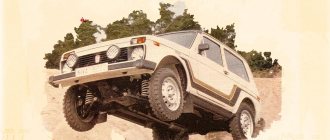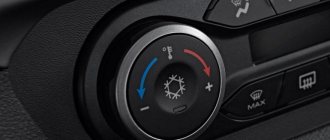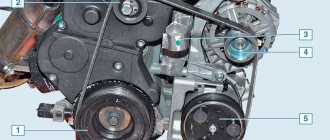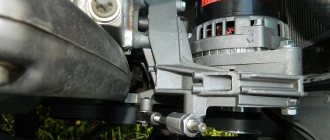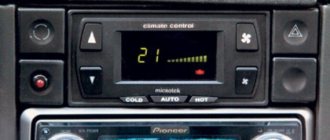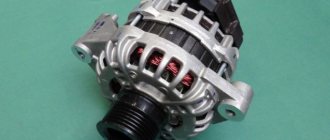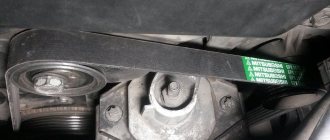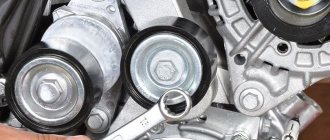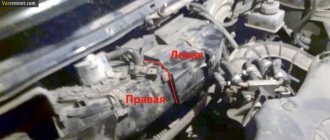To be honest, the Lada 4x4 is just a Niva. I'm generously sorry, but we simply cannot call her anything else. It was known to our ancestors under this name. Moreover, it was in 3-door form, with stamping and bumpers made of real metal. Let the ill-wishers scream that nothing has really changed at the Niva plant in 40 years, but the situation on the car market is such that many now pay more attention to their wallets than to dubious amenities and external graces, so Niva has everything chances of a second birth.
The fact is that no one else will offer you SUVs with such mobility capabilities and at such a price - neither in Russia nor abroad. In addition, Lada 4x4 has a chance to conquer the Western market, and in old Europe. And especially in Azerbaijan, and, therefore, there is something to talk about in this regard. The current generation almost entirely had foreign models as their first cars, so the overwhelming majority of them hardly understand what the Niva is. Although, to be honest, we haven’t talked to her for a long time. Well, but now let's talk closer.
Getting into this car, the first thing I had to remember was where the lever that opens the rear door is located. It is located to the left of the passenger seat. A little strange, to be honest, especially considering that the key for the rear door is different from the one used in the ignition. Those who are accustomed to opening the back door through the newfangled “kicks” with their feet under the rear bumper are unlikely to understand us; for a Lada 4×4, even the central locking is something cosmic.
By the way, the trunk still needs to be closed back. This will require - yes, that's right - slamming the back door. The spring that is attached to the lid is made specifically, so you can’t just let go of the back, you have to lower it with force. But the sound of a clap will make you sure that the door is definitely closed. And please, be careful - there may be a person standing nearby (a child, for example) who could accidentally grab the doorway.
Music in Niva
But who wants excellent quality, multi-channel, loud music? Everyone. But not for Niva buyers. All sorts of lordly manners such as multimedia (or even audio preparation, speaker mounts, etc.) are not provided. Want a treat for your ears? Implement it all yourself. As if sensing that some particularly spoiled drivers would still want to hear some tunes at all costs, as a gesture of goodwill, the manufacturer decided to provide a place for a radio in the center panel. Let’s say right away that the noise coming from the chassis will interfere with listening to the audio system if you install one. But first things first.
You are probably used to the fact that when you leave your car, the car itself turns off the light for you that you forgot to turn off. Or, at worst, it politely starts beeping that you forgot to do this. But this is Niva. Somehow we actually forgot to turn off the button responsible for the light - the result was, after some time, a completely dead battery. This machine has long been known as a product not for the lazy, and this also applies to small parts. Do not think that we strongly criticize the domestic model - rather, the reason for this is that we have been spoiled in recent years by the comfort and convenience of modern cars.
Lada 4×4, by the way, technically also does not stand still. For example, daytime running lights can light up on their own; when the engine is turned off, they also go out on their own. The steering wheel has become much lighter than on the old Nivas - no wonder, because the car now contains power steering.
Chevrolet Niva LE
In order to increase the vehicle's cross-country ability, manufacturers made several design improvements to the basic version. The LE version differs from its “little sister”:
- the presence of 16-inch alloy wheels;
- reinforced protective elements of the engine and other vital components;
- an external air intake (useful for those who like to drive through swamps, so as not to accidentally flood the engine);
- a mount for installing a winch, so that you can easily, using a third-party fastening point, pull the car out of a “stuck” position.
Reference. The LE's rear bumper also has additional protective properties.
In addition to all these “chips” that are pleasing to the eye of a lover of driving around in wild places, the car received a set of special off-road tires, as well as roof rails with a permissible load of 100 kg. As for the interior, there are almost no differences from the basic configuration: it includes all the devices and solutions of the budget version of the LE.
Reference. In the LE version, air conditioning is required in the cabin.
All of the above technical improvements, designed to increase the vehicle’s cross-country ability, even taken together, did not have too much of an impact on the final price tag of the car: by paying a little extra, the driver can get a much more passable car with a number of additional useful functions. The final price for the Chevrolet Niva LE starts at 527,000 rubles.
Separately, it is worth noting the LE+ version, which differs from its closest “relative” not too strikingly. In particular, only in this configuration the Chevrolet Niva received a black interior color and special tires with graphite-colored wheels. Both the LE and LE+ versions are equipped with a towbar in case the car has to be towed.
Air conditioner Niva 4 x 4
Believe it or not, there is air conditioning in the cabin. We tested it in warm weather, although its controls are hard to call intuitive. In addition to the power button, this module also has a “twist”, which, when rotated clockwise, produces a portion of colder air. At least that's how it was perceived. The blowing force is regulated by the heater fan button. The manufacturer has not changed the direction of air flow, as well as the design of the heater mechanism, since the 70s of the 20th century.
Whether it is good or bad - let everyone decide for themselves. In fact, even at +30°C there is a pleasant coolness in the cabin, and heavy rain is not a source of condensation accumulation on the windows - you no longer need to frantically rub them with a rag, as was the case before.
Equipment
* Vehicle manufactured in 2022, without ABS.
| Basic equipment | Lada 4×4 Urban | |
| Isofix child seat attachment | ||
| ABS | ||
| Fifth door wiper | ||
| Air conditioner | ||
| Heated and electrically adjustable exterior mirrors | ||
| Heated front seats | ||
| Alloy wheels | ||
| Additional equipment of the test car | ||
| Metallic color | ||
| Price of the basic configuration, rubles | 512 100 | |
| Price of the tested car, rubles | 479 000* | |
Checkpoint in Niva
The travel of the gearshift knob, as in the old Niva models, is very small here. Even Moskvich is unlikely to compare. Shifts are carried out quickly and clearly, nothing is loose, but it doesn’t jam either - that’s nice. The clutch operation also did not cause any complaints, the left leg does not experience fatigue. Please note that we are trying to write the article in simple language, without using any abstruse language and all sorts of, you know, terms - this will make it easier for you to perceive and for us to convey your impressions of the car.
Driving on good asphalt was accompanied by some confusion of feelings - you were constantly expecting a catch - a car with such a short wheelbase and high seating position, in theory, should need constant steering. But nothing like that happened, and that’s nice. Let's even say more - other cars from AvtoVAZ are frankly inferior here.
The car, of course, does not have any special dynamics, although, to be honest, there is no desire to put much pressure on the accelerator pedal. The car cannot be quickly maneuvered due to, as already mentioned, a short wheelbase and high seating position. This is the first one. Turns must be taken carefully so as not to cause unnecessary roll.
Second. Having not the largest engine capacity, the Niva loves to eat gasoline. Moreover, the AI-95 brand is the manufacturer’s recommendation. Number of gears: 5 pieces.
And third. Having accelerated to 60 km/h, the car becomes very noisy. It may be a whistle, a hum, a howl - whatever you call it, but the noise from the chassis can be heard very clearly. Those who are new to driving Russian cars may think that the Niva is living its last minutes and is about to stall or fall apart. Thus, the manufacturer’s wisdom regarding unnecessary musical accompaniment was fully demonstrated; the audio system simply will not be heard. However, after accelerating to 100-100 km/h, a technological surprise awaits us - the transmission sound, which had been increasing until this time, suddenly becomes quieter.
All this happens regardless of the quality of the road surface.
Thanks for subscribing!
Perhaps the level of noise emitted corresponds to some loudness standards, but people who have been driving foreign cars for a long time try to run away from such audio delights like cockroaches. It takes a lot of effort to persuade them to stay and explain that this is not just a passenger car, but a rather complex mechanism containing a cunning chassis. Particularly smart comrades tend to pull all sorts of handles that lower gears and lock the differential, despite the fact that the label with their location is glued directly to the plastic casing.
However, let’s move on to happier things - namely, we’ll talk about the design of the Lada 4×4 all-wheel drive. This is a real ALL-wheel drive, the car uses all 4 wheels while driving, there are no clutches or other connected nonsense. As, in fact, not a shadow of any electronics capable of slowing down the rotation of the wheels. But there is a handle for a rigid differential lock, as well as a handle for engaging lower gears. In this case, there are no designations that could be used as a guide. The driver himself needs to figure out whether to help the car by turning on the off-road properties of the chassis or not. This is not some foreign car, you have to think about it!
Chevrolet Niva: base, luxury and off-road configurations
Many drivers who are versed in the domestic automotive industry know that the Chevrolet Niva has only three main configurations: the basic version with the letter L, the off-road version with the designation LE and, as today’s youth like to say, the “top-end” version, designated by the letter combination GLS. At the same time, there are two more variations in the basic and “top” versions: with and without air conditioning.
Reference. The presence of air conditioning or its absence significantly affects the price tag of the car: the opportunity to drive “with the breeze” in the summer heat will cost the car enthusiast about 29,000 rubles more.
Niva cross-country ability
Let's talk about the vehicle's cross-country ability. The car is not afraid of a washed-out track, a grader with perpendicular ditches, or broken asphalt. If you even put all-season tires with a standard tread on the car, it will look like a clear winner compared to all other small or medium-sized crossovers. Ditches? Either along or across. Puddles? At least kilometres. A trip to the forest between the trees? It’s easy, and even protruding roots are not scary, as long as you don’t lose track of the steering wheel.
There were also trips through the forests near Tver, along country roads - wherever we had to wander around. And in these conditions the car could always only be remembered with a kind word. The car proved to everyone 40 years ago what it is capable of - a bunch of awards and prizes over 40 years only confirm this.
The number of videos on the Internet in which a car gets out of terrible mud or holes without any difficulties is simply off the charts, it’s hard to watch and not re-watch. In addition, SUVs are quite often constructed from Niva - in terms of price and quality, it has no equal. Especially in terms of price - in the current crisis conditions, for 500 thousand rubles you simply won’t find anything like it for trips to the forest, fishing and hunting, or off-road driving - even ATVs from the Middle Kingdom can cost more than a Niva.
Chevrolet Niva L
First, let's talk about the simplest and most budget version of this domestic SUV. The “base” of the Chevrolet Niva with the letter L includes:
- 15-inch steel wheels;
- heated side mirrors;
- electronic adjustment of side mirrors;
- "spare" with a cap included;
- convenient cup holders, special compartments for small items;
- power steering;
- folding rear seats;
- interior trim material – fabric;
- height adjustment of the steering column;
- electronic correction of optics;
- electric windows for front doors;
- heated rear passenger feet;
- central locking with remote control;
- immobilizer and alarm system.
Reference. The version with air conditioning is designated LC.
There are several external signs that can be used to distinguish the L from other versions. The most noticeable of them is the absence of roof rails on the car's roof. In addition, mirrors and door handles that stand out against the background of the body will help you recognize L - they are not painted in the main color of the car. The most budget version of the car in the showroom will cost its buyer no less than 469,000 rubles.
Description and technical characteristics of the air conditioner
In Chevrolet Niva cars, the air conditioning system is a freon refrigeration unit, the design features of which may vary depending on the model and year of manufacture. The installed air conditioner allows you not only to cool, but also to dry the air in the car, as a result of which, in case of high humidity, you can avoid the problem of foggy windows. Reviews of the Chevy confirm the fact that the operation of the Conder does not affect the engine power level, its maximum speed, or fuel consumption.
The technical characteristics of the cooling system are as follows:
- the temperature level of the air flow coming from the nozzles ranges from 9 to 18 degrees;
- SP-15 oil should be used to fill Conder;
- The compressor is driven through a belt from the power unit;
- As for the air flow performance of the device, this figure is 300 cubic meters per hour;
- the temperature difference in or outside the car is from 5 to 12 degrees;
- the node is powered by direct current;
- the mechanical power consumption parameter is about 2.1 kW if the device’s compressor produces 3 thousand revolutions per minute;
- the unit is refilled with freon type R134A, about 0.6 kg is required for refilling;
- The nominal voltage level is 12 volts.
How to change the air conditioner belt yourself?
To change the drive belt, first of all you need to drive the car onto an overpass or into a pit:
- Using a 13mm wrench, first of all you need to unscrew the four bolts that secure the pan protection. Dismantle it.
- Using a size 8 wrench (it’s more convenient to use a head), you need to unscrew five screws and dismantle the front mudguard.
- To check how well the belt is tensioned, you need to press in the middle of it with your finger, between the crankshaft and the compressor pulley. If the force is about 10 kgf, then the strap should bend no more than 8 mm. It is necessary to change the drive belt if it shows signs of wear, in particular, cracks, tears, or delamination or other damage. To change the belt, you must first loosen the screws that secure the tension pulley bracket. The tension is loosened by rotating the adjusting screw in the opposite direction, counterclockwise.
- After completing these steps, the belt can be removed from the tension roller, as well as the crankshaft pulleys and compressor unit.
- Install the new strap in the reverse order of removal. Please note that the Chevrolet Niva uses four-strand straps; their length should be 81 cm. The strap should be installed on the compressor unit pulley so that it is closer to the inside of the device. After the strap is installed, it is necessary to adjust its tension.
Possible malfunctions and ways to eliminate them
In a Chevrolet Niva car with air conditioning, problems may arise over time with the operation of the climate control system.
What malfunctions are typical for this unit:
- Gas leakage from the system, in particular freon. Such problems are a consequence of loss of tightness. If the seal is broken, this will lead to the need for more frequent refilling of the condenser. When the gas level is low, the power of the overall system will also decrease.
- The air conditioner radiator may fail due to the negative impact of dirt and salts on it. Ultimately, this causes the formation of corrosion on the radiator structure, as well as depressurization of the system as a whole.
- Belt break. This problem, judging by the reviews, does not happen often, however, it cannot be ruled out. To prevent the belt from breaking, it is necessary to follow the instructions for replacing it.
- The evaporator unit in the system may also become clogged. If this is the case, then when the air conditioning system is activated, an unpleasant odor may appear in the car interior, and moisture may accumulate below, on the mats.
- Another possible malfunction is increased pressure in the system. In the event of such a breakdown, the unit will not be able to operate normally at idle speed of the engine, but when the car resumes movement, the functionality of the device is restored. The pressure in the system may be increased due to clogging of the condenser device, inoperability of the fan, and failure of the fan switch sensor.
- Incorrect operation of the thermostatic valve. In particular, the problem may occur when it becomes clogged.
- Failure or incorrect operation of the compressor. If the compressor is faulty, a characteristic noise may appear when the system operates. If there are traces of oil on the compressor housing, then most likely the device is jammed. If the unit breaks, the reason for this may be the long-term use of a depressurized condenser (the author of the video is the Den4ek CheviNiver channel).
Video “How to move the air conditioner control button in a Chevrolet Niva”
Visual instructions for moving the air conditioner control button to a more convenient place are presented in the video below (the author of the video is Ig K).
This manual is intended to help you diagnose and effectively resolve the most common possible problems with your vehicle's air conditioning system.
Diagnostics is based on current pressure readings in the air conditioning system. If the readings are outside the ranges shown in the table (pressure reading reference table), the system may be faulty.
| Outside temperature (C) | Low pressure line (LP) (kg/cm2) min. Max | High pressure line (H.D.) (kg/cm2) min. Max |
| 15,5 | 1,5 . 2,3 | 9,5 . 13,0 |
| 21,0 | 1,5 . 2,3 | 12,5 . 17,5 |
| 26,5 | 1,5 . 2,3 | 14,0 . 20,5 |
| 32,0 | 1,5 . 2,5 | 16,0 . 24,0 |
| 38,8 | 1,5 . 2,5 | 18,5 . 25,5 |
| 43,0 | 1,5 . 2,5 | 22,0 . 28,0 |
Below are the most likely causes of malfunctions identified based on pressure readings on the low or high pressure gauge. The figure shows a pressure gauge reading with a significant deviation from the norm.
NOTE The following "possible causes" are based on the statistical probability of failure occurring.
Pressure gauge readings
Probable causes of malfunctions
The suction and drain hose were swapped when connected to the compressor. The compressor's electric coupling has slipped or failed to engage. Expansion valve stuck open. If the compressor is a variable displacement compressor, slight but rapid fluctuations in low pressure will be observed. The compressor displacement control valve is incorrectly adjusted or faulty. The compressor is damaged.
Pressure gauge readings
Probable causes of malfunctions
The filter is saturated with moisture. The compressor displacement control valve is stuck in the maximum displacement position.
Pressure gauge readings
Probable causes of malfunctions
Warm air has entered the evaporator unit or the passenger compartment. Warm air has entered the radiator. Ice on the evaporator core.
